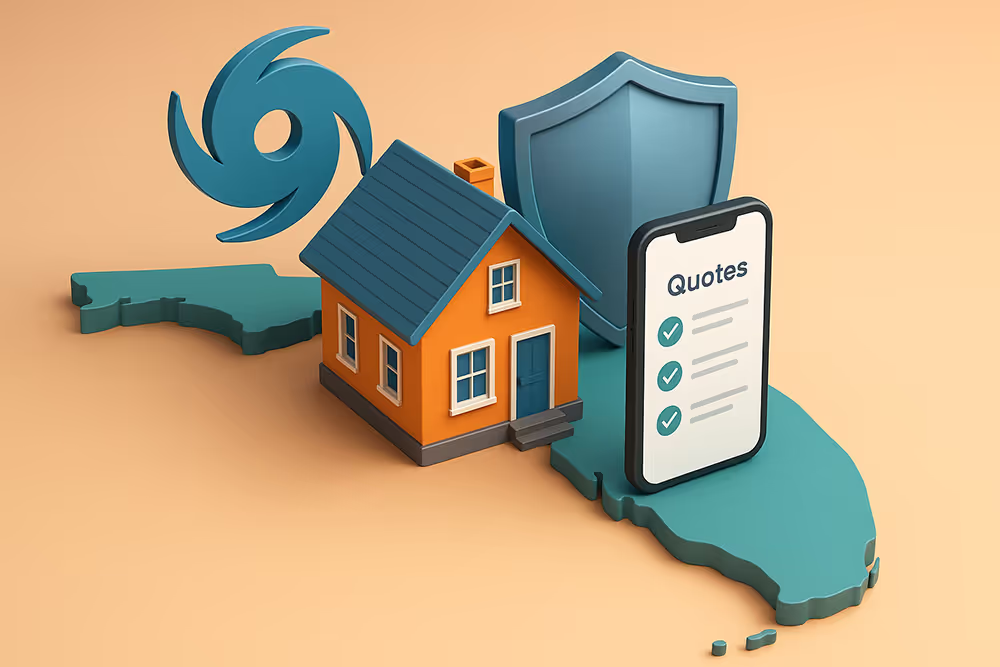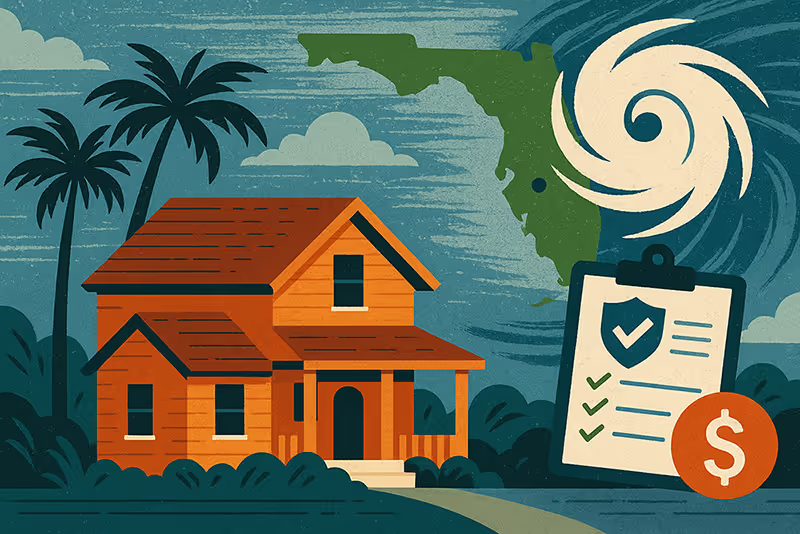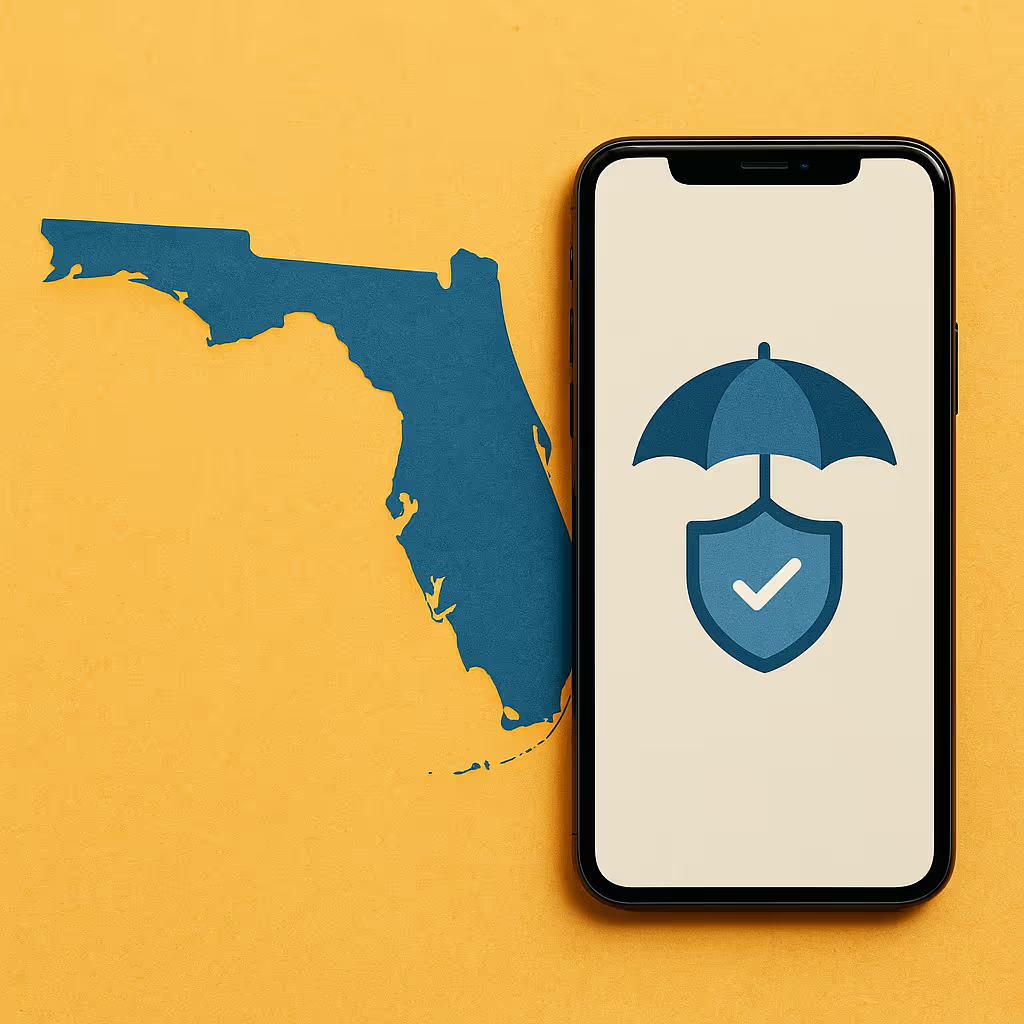Why Florida Home Insurance Costs Are Rising – 5 Ways to Save in 2025

Home insurance premiums in Florida are rising due to factors like construction costs, supply chain disruptions, and climate risks. Learn why this is happening and how you can save.
Florida homeowners have faced a storm of increases in their insurance bills. In many areas, premiums have jumped dramatically, driven by a potent mix of factors: expensive rebuild costs, supply-chain snags, steep inflation, and mounting climate risks. For example, Miami-Dade homeowners saw premiums explode by 322% in 2024, followed by Jacksonville (+226%) and Tampa (+213%).
(Orlando and other metros saw similarly high hikes as insurers recalculated risk.)
At the same time, the state average bill remains among the nation’s highest – one analysis found Florida’s typical annual home premium around $14,140 in 2024 (rising to $15,460 by end-2025, a 9% jump).
By comparison, Florida’s OIR data put the all-coverage average near $3,700 in 2024, but even that is far above the U.S. mean. (For context, MoneyGeek notes Florida’s average premium at $8,770 for a 250K policy; 262% higher than the national average.)
Several regional reports back up these trends. Worth Insurance’s own county-by-county analysis shows huge variation: premiums range from as low as $1,694 in rural Baker County to $7,162 in hurricane-prone Monroe County. Along the coasts, major cities and resort areas face the steepest bills.
A recent summary puts Florida as the second-most expensive state for home insurance nationwide, averaging about $5,400 per year (for a $300K coverage policy). Even so, insurers warn that these averages mask big swings (some policyholders are seeing double) or triple-digit increases on top of already high base rates.
Multiple Factors Fueling Premium Spikes
Florida’s premium surge isn’t random. It reflects concrete drivers:
Climbing Construction & Rebuild Costs
- Inflation has made every roofer, carpenter, and nail more expensive. National data show construction now accounts for over 64% of a new home’s sales price (up from ~61% in 2022).
- One industry study found the average replacement cost of a home rose 55% between 2020 and 2023.
- Florida builders report that raw material price increases (lumber, concrete, metal) outpace general inflation.
- For homeowners, that means any hurricane or disaster now costs vastly more to rebuild; and insurers must charge higher premiums to cover the risk.
Tariffs and Supply Shocks
- Proposed U.S. tariffs on steel, aluminum, lumber and other building materials threaten to drive costs even higher.
- Experts note these tariffs could add roughly $4 billion to the cost of construction inputs.
- When material costs rise, insurers pass them along to customers.
- As one Florida regulator put it: “if tariffs impact construction costs, that’s going to impact everybody’s home insurance bill”.
- In practical terms, analysts warn, sustained tariffs would force nearly all homeowners to pay noticeably more in premiums.
Supply-Chain and Labor Shortages
- Even without tariffs, supply disruptions keep costs high and timelines long.
- Builders report that supply-chain delays and a lack of qualified labor can add 15–20% or more to home building costs.
- For example, Florida developers say a home once built in 12 months can now take 15–18 months due to backlogs.
- These delays mean insurers expect longer periods at risk and higher replacement costs.
- As one report notes, amid continuing pandemic-era bottlenecks, “construction costs increase daily; often higher than inflation”, squeezing the market from all sides.
Climate Change and Natural Disasters
- Florida’s climate profile ensures frequent, costly catastrophes.
- In 2024 the state suffered back-to-back major storms: Hurricane Helene (Cat 4) hit the Big Bend in late Sept. and Milton (Cat 3) hit the Panhandle in early Oct.
- These storms caused tens of billions in damage. Munich Re estimates $56 billion total loss from Helene ($16B insured) and $38 billion from Milton ($25B insured).
- When disasters strike so close together, insurers brace for massive payouts.
- Notably, NOAA now forecasts an 80% chance of an above-normal Atlantic season in 2025, meaning more storms on the horizon.)
- On top of hurricanes, rising seas and intensified rains expand flood risk across the state.
- FEMA’s 2024 flood-map update “expanded flood risk” substantially: in South Florida alone it added ~138,800 structures to high-risk zones, forcing many more homeowners to buy costly flood coverage.
Regional Litigation & Market Stress
- Many insurers have retreated or become more selective in Florida after years of assignment-of-benefits claims and litigation.
- Florida’s insurer-of-last-resort (Citizens) remains large and has been raising its rates by ~6–14% for 2025.
- Fewer competing carriers means less price pressure.
- State reforms in 2022–24 are aimed at reducing lawsuits and enticing new insurers, and officials note the market is stabilizing; even reporting a 0.9% drop in Q4 2024 and only a 1.0% overall rate increase for the year. But these broad trends may not be noticeable in hard-hit metro pockets.
How Does Florida Compare?
Florida’s average premiums dwarf national norms.
For example, surveys and models cite Florida averages anywhere from $4,200 up to $8,770 or more, versus ~$1,900 national. Bankrate found Florida’s ($5,400) was second only to a few Tornado Alley states.
Importantly, regions feel the pinch differently. Worth Insurance data show Miami–Dade and other coastal counties running far above inland rates.
(By contrast, some inland/rural counties still see relatively low premiums thanks to lower risk.) These imbalances mean Floridians in high-risk zones often cover double or triple what neighbors pay in safer areas.
- Miami-Dade policies soared over 300%, while Orlando-area homeowners (Orange/Osceola) have also seen very large hikes.
- Even areas like Jacksonville, somewhat shielded by geography, saw 226% increases.
- Many ordinary Floridians have found their only renewal option is Citizens Property Insurance.
- While Citizens is essential, it’s no bargain. Its backlog of risk means statewide rate hikes (e.g. ~6–14% for 2025) that add to private-sector pressures.
- The good news is 2024’s reforms have started reversing losses: by year-end 2024 new companies entered and many filed for rate cuts.
- Industry analysts say “the market is improving” and suggest shopping around, as agents report many customers now paying up to 50% less than last year.
- Still, the baseline is high, so every family feels the pain of the past few years’ volatility.
Implications of Climate and Flood Risk
Climate trends amplify all the above. As one state climate commentator notes, Florida is the most flood-prone state with only ~12% of homes carrying flood insurance.
Yet floods (not just hurricanes) are becoming a bigger part of the risk picture. FEMA’s new maps illustrate this: high-risk flood zones have grown, catching inland areas off guard.
More homes now face mandatory flood-coverage requirements, meaning higher overall insurance bills. Meanwhile, NOAA and others warn that warmer oceans will fuel more frequent rapid storm intensification, and that Floridians should prepare for an active 2025 season.
In short, insurers see a tightening squeeze: more severe events + more expensive repairs = higher premiums.
As one Florida regulator explained, the combination of climate-driven losses and construction inflation had driven up insurers’ costs:
“homeowners…feel the sting of rising costs”
And that forces premiums skyward.
What Homeowners Can Do
The situation is serious, but not hopeless. Homeowners and buyers can take some comfort in knowing market stability is improving (courtesy of recent reformsfloir.com). Nonetheless, anyone living in Florida needs to stay proactive. Key tips include:
- Shop Around Continuously: Premiums vary wildly by carrier and region.
- If your renewal jumped, you must compare: agents report many Floridians dropping 20–50% by switching companies.
- Use independent brokers or online tools to get multiple quotes (Our free quote service can compare 20+ providers including Citizens) and lock in the best rate.
- Improve Home Resilience: Discounts are available for homes with strong roofs, shutters, and mitigations.
- If you qualify for windstorm or hardening credits (e.g. My Safe Florida Home program grants), make sure to claim them; even that alone can trim premiums.
- Our Wind Mitigation and Roof Condition guides can help identify savings.
- Review Flood Exposure: Don’t ignore flood risk.
- Given the new FEMA maps and rising water levels, consider flood insurance even if not currently required.
- Often, flood premiums are much lower than losing everything in an uninsured flood.
- Use Higher Deductibles Smartly: A higher deductible lowers the premium.
- In Florida policies, that often means a larger hurricane deductible (2–10% of dwelling value).
- If you have savings to cover it, you can cut your annual cost. Just balance risk and preparedness.
- Stay Informed on Legislation: 2025 session has more insurance bills (e.g. SB 2-D reforms) that may affect your rights and rates. Being aware of changes (and deadlines) can prevent surprises.
- Consider Umbrella Policies: With property values so high, adding an umbrella policy to extend liability coverage might be cost-effective, compared to constantly upscaling home limits.
Ultimately, the key is to be proactive. As one industry expert put it, if your policy price keeps rising, “ask your agent to shop your policy. There are better prices out there”. In a market this dynamic, even small changes (new carriers in your area, improved home features, etc.) can yield savings.
For help navigating these rising costs, Worth Insurance is ready to assist. Our agents can explain new rules, point out discounts, or simply compare policies for you. Don’t accept the sticker shock. Get a free quote and see if you can secure better coverage at a lower rate today.
If you’re a homeowner in Florida, having the right insurance coverage is essential to protect your investment from hurricanes, floods, and other unexpected events. Learn more about the different coverage options, policy requirements, and ways to save by visiting our detailed guide to Florida homeowners insurance.
To see how Worth can reduce your risk.
Get a Free Quote






































